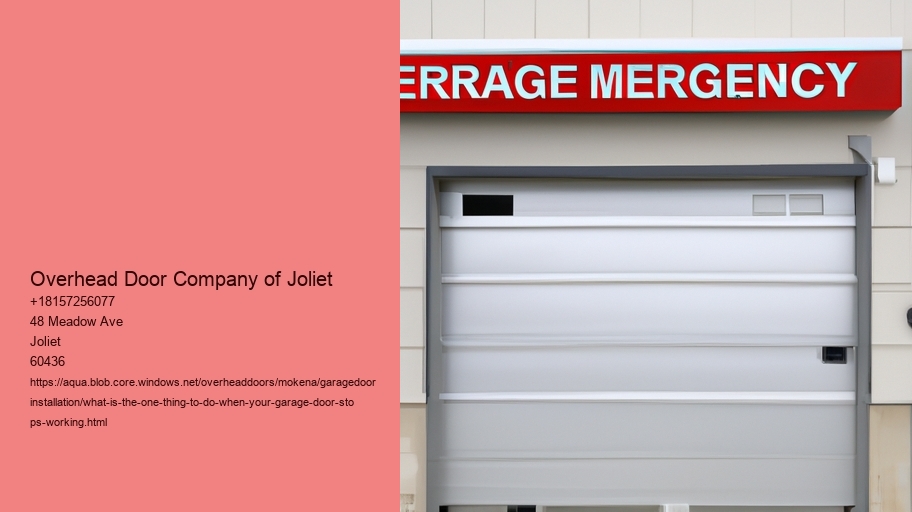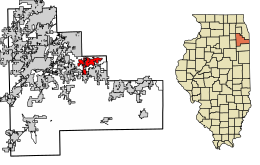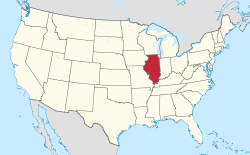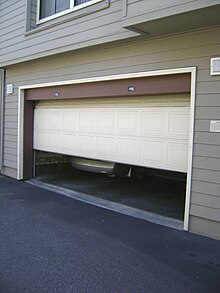Know the type of garage Door and Opener
It is vital to identify the type of garage door and opener you own before you start troubleshooting. What is the most important thing You Should Do When Your Garage Door Suddenly Stops Working? .
Roll-up garage doors typically used in commercial spaces are constructed of slats that are then rolled up into a coil.
The tilt-up doors, on the contrary, is a solid, single piece that opens by tilting inward and upwards.Importantly, you must identify the type of garage door opener.The three most common types are belt-drive, chain-drive and screw-drive openers.Chain-drive openers, which utilize a metal chain to lift and lower the door, are durable and affordable, however they can be noisy.Belt-drive openers function similarly, but they utilize a rubber belt which is quieter, and a good choice for attached garages.Screw-drive openers are able to move the door by using a threaded steel rod, offering a balance between sound and cost.
Once you've identified the garage door and opener type The next step is to carry out a basic check for common issues.Ensure there's power to the opener examining the outlet and breaker.Inspect the release cord for manual to be sure it hasn't been pulled, which would disconnect the door from the opener.Examine the tracks of the door and rollers for obstructions or damages and remove any debris.
What is the One Thing to do when your Garage Door Stops Working? - immigration
- pricing
- wall stud
- United States Census Bureau
If the door is still unable to function, try resetting the opener.This is often a solution to electronic glitches or faults.Consult the manual for your opener to find specific instructions for reset, since this procedure may differ for different models.Many modern openers include reset buttons, however others may require unplugging and plugging it back in.
Spring tension is too high and can cause danger to repair them without the proper tools.
When your garage door suddenly stops functioning or is not working, it's best to consult a professional.
Check for Obstructions or Debris
It can be a bit frustrating and confusing when your garage door doesn't work abruptly, particularly if you are using it daily.
One of the most important and most effective steps to consider when you are faced with this problem is to examine the door for obstructions or debris.This simple, yet powerful action is often the most effective way to identifying the problem and restoring the functionality of your garage door.Garage doors operate by a set of tracks, rollers, and other moving parts that have to be free of obstacles in order to function smoothly.Over time, dirt, leaves, tiny rocks, or any other debris could accumulate along the tracks or get caught in the rollers.Even an obstruction of a tiny size can prevent the door from opening or closing properly.Therefore it is imperative to conduct a thorough examination of these components should be the first thing you do.
Begin by examining the tracks on both the right and left sides of the door. Find obvious obstructions or debris build-up. If you spot something odd, such as something like a twig, or rock that is stuck within the track. Remove it with care.
The issue may not always be visible. To determine whether the issue remains there, try running your hand down the track. Also, make sure that the tracks are correctly aligned. This is because misalignment could create a jam in the door.In the next step, examine the rollers and hinges.These parts should be able to move without resistance.If they're sticky or stuck, it could be a sign of accumulated grime or rust.In such cases, cleaning and lubricating them will usually resolve the issue.Use a gentle cloth or brush to clean any dirt, and apply a suitable lubricant to ensure that they move freely.
It's also crucial to examine the area around the door itself.Sometimes items stored in the garage could accidentally fall or shift, blocking the path of the door.Ensure that the area is clean and that there's nothing that is hindering the door's movement.
Make sure the sensors are working if the door won't open after removing any obstructions.
Modern garage doors are equipped with safety sensors to prevent the door from closing if something happens to be detected in its path.Make sure that these sensors are in good condition and aligned properly, as the presence of dirt or misalignment could cause them to fail.If you are confronted with the garage door that abruptly isn't working, looking for debris or obstructions is a reasonable and often useful first step.It is not a huge undertaking and requires no tools or knowledge, but it could save your time, money, as well as the inconvenience of contacting a professional for what could be a straightforward fix.By maintaining a clear path and
Inspect the Remote Control and Wall Switch
It is important to verify the wall switch and remote control.
The inspection of these components can help you to save time and avoid costly errors.First, consider the remote control.This handheld device is your primary tool for operating the garage door without direct physical interaction.Over time, remote controls can experience issues such as drained batteries, signal interference, or even internal damage.Start by replacing the batteries with new ones.It might seem simple, but dead batteries are a common reason for a garage door not responding.If the problem persists after replacing the batteries, try reprogramming the remote according to the manufacturer's instructions.Additionally, ensure that the remote is within the recommended range and that there are no obstructions blocking the signal.
The wall switch is a critical component of the garage door's security system.
The wall switch is directly linked to the garage door opener, and generally provides a more reliable way for operation.Inspect the switch for any indications of physical damage or wear.Sometimes loose wires, or connections that are not working correctly can make the switch malfunction.If you are comfortable doing it, then carefully open the switch panel to check for broken or disconnected wires.If there are any issues there is a need to consult an electrician professional to resolve the issue.The wall switch or the remote control is working however the door still not responding. This could mean problems with the garage opener's unit or with other components such as sensors or door tracks.
It helps you remove these common issues before you move on to more intricate troubleshooting techniques.In the end, examining the wall switch and remote control when your garage door suddenly stops working is a sensible and simple approach.By taking a look at these components first, you will be able to quickly determine whether the problem lies within these components or if additional investigation is needed.This initial examination not only saves time but also gives you peace of mind knowing that you've taken the appropriate steps to identify the issue in a timely manner.
Verify the door's balance by hand
When the garage door stops functioning, it can be both frustrating and inconvenient.The garage door is an essential part of your home, providing security, shielding from the elements, and ease of access to your vehicle as well as storage space.
One critical step you should make when confronted by a malfunctioning garage door is to examine the door balance.This easy, yet efficient procedure will allow you to identify any potential issues and avoid further damage to the door or its parts.The stability of a garage door is crucial for the proper functioning.A balanced door will ensure that the door opener does not require more effort than necessary, reducing the chance of wear and wear and tear on the motor, as well as other parts.An overbalanced door contrary to what you might think could lead to more severe issues over time like misalignment, broken springs or complete system failure.Therefore conducting a test of the door's balance is a crucial check that will help you determine whether there is a problem with the door itself or with the opener mechanism.
Start by disengaging the garage door opener.
Most garage doors feature a release mechanism. It is typically an orange cord or handle which allows you to disconnect the door from its motor.Once the door is unlocked then carefully raise it to about waist height, and then release it.A properly balanced door should remain stationary or move very slowly.If the door drops fast or jumps up the floor, it could indicate an imbalance.It is best to contact a professional to help you adjust the springs in order to ensure that your garage door is correctly balanced. This will not only fix the issue, but also increase the life and efficiency of your door.
In conclusion, manually checking the door balance is an essential first step if your garage door stops working suddenly.
This helps determine the root of the problem, which could be in the door's balance or somewhere else in the system.By being aware of the importance of balance for your door and dealing with any issues immediately you will be able to avoid any further damage and ensure that your garage door functions efficiently and safely for many years to come.Tracks and Rollers
This easy check can save you money and time if your garage door is not functioning.
The tracks and rollers in your garage's operation system are essential. The tracks comprise steel rails that guide the door as it opens. The rollers move along the tracks.
Over time, these parts may become dirty, misaligned or damaged, resulting in operational problems.What is the One Thing to do when your Garage Door Stops Working? - immigration
- immigration
- golf course
- Florida
What is the One Thing to do when your Garage Door Stops Working? - golf course
- Ohio River
- chain drive
- sand
The next step is checking the alignment of the tracks. The tracks should be parallel and perfectly straight. If they appear bent or are out of alignment, the door could jam. It is possible to tap the misaligned section back into position with a rubber mallet. If there is a lot of damage, it's better to call an expert who can realign the tracks correctly.
The rollers may wear out as time passes. This is particularly true if they're made of plastic.
Find signs of wear and tear such as cracks or chips.If the rollers look damaged, you should consider replacing them with new ones.Metal rollers equipped with ball bearings usually offer greater durability and more smooth operation.Furthermore, lubrication is a essential role in maintaining the smooth motion of the tracks and rollers.Applying an lubricant based on silicone can lessen friction and help prevent wear.Make sure to grease all moving parts, including the hinges and springs, to ensure that your garage door functions effectively.
In conclusion, checking the tracks and rollers is a sensible first step when the garage door suddenly stops working.It's simple procedure that can often identify and resolve frequent issues.By ensuring these components are in good condition, aligned and well-lubricated you can frequently get your garage door back to its original functionality without the need for costly repairs.
Monitoring and regularly maintaining the parts can help to prevent future malfunctions. This will extend the life of the garage system.Look for obvious damage or wear
If garage doors stop functioning, it can be both inconvenient and frustrating particularly when you are going out or attempting to secure your home for the evening.While there are a myriad of reasons behind the issue One of the most efficient and swift options is to examine the door for obvious damage or wear.This initial inspection can often reveal the root cause of the problem, allowing for a quick and efficient solution.
The garage door is an intricate system made up of many components, including springs, cables, rollers, and tracks every one of which plays vital roles in the smooth operation.Over time, these parts are prone to wear and tear due to regular use and exposure to environmental elements.
By conducting a thorough visual examination, you will be able to identify any obvious indications of damage causing the door to malfunction.Start by inspecting springs. They are the ones responsible for lifting and lower the door. Find signs of rust or wear. A worn or damaged out spring could render the door inoperable, therefore it's important to fix this problem immediately. In the next step, inspect the cables for signs of fraying or broken wires.
The door is a different area that needs focus. Look for visible cracks, warpings, or bends.
Make sure that the sensors on the door are also clear and in good alignment. A misalignment or dirt build-up could cause them to malfunction and stop working.While a thorough inspection of your property can provide valuable insights, it is essential to remember that some issues might not immediately apparent.If you don't see any obvious indications of wear or damage, it could be necessary to seek out a professional to diagnose and resolve the problem.However through a preliminary inspection, you can often find and correct minor problems before they turn into serious and costly repairs.
This approach will not only help you identify the problem quicker, but allow you to take steps to restore your garage door's proper function.
You can prolong the life of your garage door simply by taking proactive steps.Make sure to check for Springs and Cables
When your garage door stops working is both painful and inconvenient.One of the most important things you should do when faced with this issue is to examine the springs and cables.These components are vital to the functioning of your garage door, and issues with them are usually the cause of a malfunctioning door.
Springs play an important part in the functioning of the garage door through neutralizing its weight.When the door is in motion, the springs carry most of the burden allowing the door to be opened and closed smoothly.There are generally two kinds of springs, torsion springs and extension springs.Torsion springs are installed above the garage door, and they twist to store energy, while extension springs are mounted on either side of the door and extend to allow the required force.
The springs could be worn out with time break, or lose tension causing operational problems.They can also be damaged through wear and tear. They can fray or snap under pressure.
If you are unsure whether the cables or springs have to be adjusted, visual look them over. Find signs of wear and rust.
Security is a must when dealing with garage door components.
The springs and cables are stretched and may cause serious injuries. If you do not have experience in garage door repairs, it's advised to consult a professional. They will have the tools and expertise necessary to safely repair or replace these components. This will ensure that your garage door functions efficiently and safely.In conclusion, when your garage door suddenly stops working, assessing the springs and cables is a key step in diagnosing the problem.Understanding their role and potential issues can help you determine whether a simple adjustment is needed or if professional intervention is required.Taking prompt action not only restores functionality but also ensures the safety and longevity of your garage door system.
Think about calling a professional technician
Garage doors can suddenly stop working, causing you to lose your time. It could even expose your home to danger.
It may be tempting to grab an instrument box to attempt a fix yourself however it is better to call an expert. This choice is not just about your security, but will also provide a lasting and more efficient solution.Garage doors are complex systems composed of various components such as springs, cables, tracks, and electronic parts.Each of these elements plays a crucial role in the door's operation, and a malfunction in any part can cause the entire system to fail.Without proper knowledge and experience, attempting to fix these issues can be dangerous.For instance, garage door springs are under high tension and can cause severe injury if handled improperly.Professional technicians are trained to deal with these risks safely, using the right tools and techniques to handle repairs.
Additionally, a professional technician has experience and expertise that a layperson does not have.
They can quickly diagnose the issue and identify whether it's a minor problem, like a misaligned track, or something more serious, like a broken spring.This expertise not only saves you time but also prevents the potential for further damage that can occur with incorrect handling.Professionals also have access to high-quality parts and can ensure that replacements match the specifications of your existing garage door system, leading to better functionality and longevity.Additionally employing a professional may save you money over the long run.While DIY is a good option, while a DIY method may seem less expensive initially, the likelihood of errors is very high. This can result in more extensive and costly repairs in the future.A professional technician can complete the task correctly the first time, minimizing the risk of repeating issues.
A lot of technicians offer guarantees on their work, giving you peace of mind knowing that should something go wrong, you're covered.Calling a professional will reduce time and cost. In trying to comprehend the mechanics of garage doors, buying the right tools, and then perform the repair can take hours or days. A technician can resolve the issue quickly and allow you to get back to your normal routine.
The urge to fix the garage door yourself is strongly. But, calling a professional is the best solution, most reliable and safest option. Their knowledge and access to high-quality replacement parts, and their capability to make quick and accurate repairs will ensure that your garage runs efficiently and is protecting your home.


















